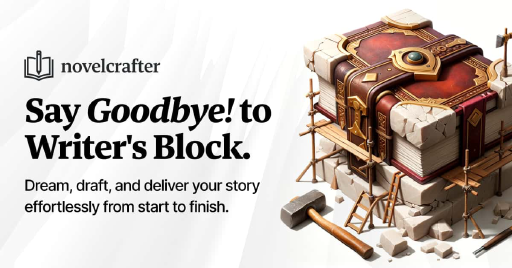Getting Started with Novel Plotting
Jumping into the world of novel plotting can change how your story comes alive. Almost like setting the stage before any of your characters even step on it.
Why Nailing Down the Plot Matters
Think of your plot as the solid ground your story walks on. Without it, characters wander aimlessly and readers might soon lose why they began the journey. Here’s why getting your plot sorted is a lifesaver:
| Why It Matters | What It Does |
|---|---|
| Keeps You Hooked | Snares readers by the collar and won’t let go. |
| Paves the Way | Lays down tracks for how your characters evolve and feel. |
| Digs Deeper | Lets you explore those big, meaty themes and messages. |
| Brews Conflict | Whips up tension for a hearty payoff. |
Put some elbow grease into plotting, and you’ll find it pays off in pages that practically turn themselves. Need a hand sharpening your overall skill set? Check out this guide on writing better.
Quick Look at the Novel Plotting Adventure
Every great plot started as a few scribbled notes, so here’s how it typically breaks down:
-
Tossing Ideas Around: First up, let your imagination run wild with concepts you’re itching to explore. Characters, settings, themes—anything goes!
-
Sketching an Outline: Pin down the major plot landmarks. Whether you’re a fan of the classic three-act method or prefer the beat sheet route, get it mapped out.
-
Diving into Characters: Give your characters some meat on their bones and align their journeys with the plot. Curious about character growth? Check out this resource.
-
Tangling with Subplots: Weave in subplots that beef up your main storyline, but don’t let them steal the spotlight.
-
Getting the Draft Down: Armed with your plan and characters, dive into that first draft. Keep your outline close, it’s your road map.
-
Polishing it Up: Revisit your draft, finetune the plot, and make those rough edges smooth. Look at these editing tips to help you out.
By nailing each stage, you balance the big picture with all those littler details that make your story sing. Remember, plotting your novel is just as thrilling as penning the actual tale. Got writer’s block? Wave it goodbye with these handy hints.
Creating Memorable Characters
Nailing down unforgettable characters is critical when you’re learning the ropes of plotting a novel. These folks are the engine of your story, making it click with readers. Let’s dive into some strategies on character development, arcs, and what makes them tick.
Character Development
Building characters means constructing unique folks that stick in readers’ heads. Kick off by mapping key traits, backstories, and what they’re aiming for. A solid character has a mix of strengths, flaws, and quirks that sway what they do and how they’re perceived. Here’s a nifty chart to help you lay out their details:
| Character Name | Age | Background | Strengths | Weaknesses | Goals |
|---|---|---|---|---|---|
| Example Character | 30 | Grew up in a small town | Resilient | Impulsive | Become a successful artist |
| Example Character | 25 | Raised by a single parent | Empathetic | Overly cautious | Find true love |
Besides traits, think about how your characters shift and change as the plot unfolds. They’ve got to hit bumps in the road that make them rethink and grow. For extra tips on character creation, check our piece on how to develop characters in a story.
Character Arcs and Motivations
Character arcs show the journey they’re on through the storyline. A killer arc can crank up your plot and keep folks turning pages. Arcs usually fall into one of three: up, down, or steady as she goes.
- Positive Arc: The character gets wiser, overcoming inner struggles.
- Negative Arc: The character spirals down or goes astray ethically.
- Flat Arc: The character stays the same but rocks the boat for others.
What pushes a character to act is key. Motivations often brew from personal dreams, societal norms, or past baggage. Pinpoint what lights a fire under your character. This table may help you sort out what spurs them on:
 What Poetry Feels Like
What Poetry Feels Like| Character Name | Motivation | Internal Conflict | External Conflict |
|---|---|---|---|
| Example Character | Desire for acceptance | Fear of rejection | Pressure from family |
| Example Character | Quest for justice | Guilt from the past | Conflict with an antagonist |
Cooking up deep arcs and clear motivations makes your story juicy and relatable. These characters are the lifeblood of your tale, pulling readers in tight. As you pen your plot, remember: well-fleshed-out characters often breed a fascinating tale. For more storytelling advice, check our write-up on tips for writing a novel.
Building Your Story World
Crafting a story world that draws readers in is like inviting them to a place they can’t bear to leave. Here’s a handy guide to help you set the stage and nail down those essential parts that make your storytelling shine.
Setting the Scene
Nailing the scene means picking the right when and where for your tale. A strong setting adds layers of depth, providing the backdrop against which everything unfolds. Here’s what you gotta keep in mind:
| Aspect | What’s it about? |
|---|---|
| Time Period | When’s the story unfolding? Is it in the here and now, the dusty past, or the far-out future? |
| Location | Where’s your story happening? A known locale or a place spun from your imagination? |
| Atmosphere | What’s in the air? Descriptions of weather, light, and sound can do wonders for mood-setting. |
| Cultural Influences | How does culture shape the way your characters act and react? |
As you paint your picture, think about how the surroundings tug on your characters. Is it a war zone or a friend to them?
World-Building Elements
World-building is about weaving a universe that makes your story believable. Check out these things to add to your creation:
| Element | What’s the deal? |
|---|---|
| Geography | Sketch out the lay of the land—mountains, rivers, towns, and all. |
| Magic Systems | Got magic? Define its rules and limits, making sure it makes sense. |
| Government | What political juice is flowing? Who’s in charge, and how are laws made? |
| Society | Dive into the pecking order, customs, and the norms your characters live by. |
| History | Cook up a backstory for your world. What past events led to where things stand now? |
Weave these elements smoothly into your tale. Maybe the world’s history is upending the present, or your landscape’s quirks are steering character choices.
To keep leveling up your skills, look into how to improve writing skills or peek at some writing tips for descriptive scenes. These bits and bobs will enrich your storytelling, making it a deeper dive that keeps readers coming back for more fun and insight.
Crafting the Plot Structure
Setting the scene for a novel involves more than just penning words; it’s about building a world that draws the reader in. Here, I’m gonna break down the essentials: kicking off the story, stirring up drama, and wrapping things up nicely.
Introduction and Exposition
Think of the introduction as your grand entrance. This is where you’re rolling out the welcome mat for your readers, letting them meet the stars of your show, and hinting at what’s brewing behind the scenes. You wanna hook them right outta the gate.
The exposition is basically spilling some backstory tea. It’s where you give out the juicy details—like filling in on where your characters come from and what makes their world tick. A simple table might help keep the details straight.
| Element | Description |
|---|---|
| Main Character(s) | Who’s the big cheese? Lay out the basics of who they are and what’s up with them. |
| Setting | The where and when—paint a picture of the time and space of your story. |
| Initial Situation | What’s shaking at the start? Set up any major happenings or situations right from the jump. |
Need a hand with getting started? You might enjoy how to write a compelling opening scene.
Rising Action and Conflict
After you’ve opened up, you craft the rising action—where stuff really starts hitting the fan. This is the meat of your tale where all the nitty-gritty unfolds.
As you stir the pot, throw in hurdles and spats for your characters to deal with. These are the sticking points that keep a reader flipping pages. A quick table can help you manage this part.
| Element | Description |
|---|---|
| Conflict Type | Is it personal demons or external foes? Lay down whether it’s an inner struggle or something/one from the outside. |
| Key Events | What are the big events adding juice to your story? |
| Character Growth | How’s the character changing or growing when the going gets rough? |
Knowing how to keep the tension rolling is key. Peek at how to build tension in writing for some extra tips.
Climax and Resolution
The climax is your story’s fireworks finale—where everything’s been leading up to for maximum impact and feels.
Right after the big bang, the resolution is your chance to wrap up the journey. It’s when all the dust settles, and you answer any lingering questions.
Think of it like this:
| Element | Description |
|---|---|
| Climax | Where’s the story’s tipping point? This is your moment to shine. |
| Resolution | How do things wrap up? Spell out how conflicts smooth out and character paths finish up. |
For more insights on wrapping things up neatly, check out writing tips for fiction authors.
Nail these building blocks and your storytelling will be a hit. You’ve got the know-how to keep your readers locked into every twist and turn, riding through to a satisfying end.
Layering Subplots and Twists
Adding some extra spice to your story can level up the reader’s good time. By throwing in subplots and unexpected turns, you can cook up a narrative that keeps your audience hooked from page to page.
Adding Depth with Subplots
Subplots, mini dramas that weave alongside your main story, give your tale that extra oomph. They’re great for digging into what makes your characters tick, setting up potential chaos, and generally giving the whole story more flavor. Here’s why slipping subplots into your book’s a smart move:
| Benefit | Explanation |
|---|---|
| Character Development | Subplots let you dive deeper into who your characters really are, making readers feel more plugged in. |
| Theme Exploration | They can spotlight or throw a wrench in the main vibes of your story, adding layers for folks to chew on. |
| Pacing Control | They help you hit pause during the action or ramp up the heartbeats when things are a bit quiet. |
Making your subplots hit the mark? Give these a shot:
- Make sure your subplots vibe with the main gig.
- Don’t flip-flop character motives across plots; keep it steady.
- Sprinkle subplots throughout, don’t just lump them all in one go.
For more juicy details on making characters pop, peek at our piece on how to develop characters in a story.
Incorporating Plot Twists
Plot twists are those curveballs that veer the story off its cozy path. They add shock and zest, leaving readers with those “whoa!” moments in your book. Good twists give your story fresh air and make readers see the tale through new lenses.
To nail a killer plot twist, try these tricks:
- Foreshadowing: Drop clues without raising eyebrows. Keep the twist a surprise but not a blindside.
- Character Revelation: Expose a deep dark secret or motivation that spins the story on its head.
- Unexpected Outcomes: Lead readers down the wrong path, then pull the rug and leave them gasping.
Here’s a bite-size chart of some go-to plot twists:
| Type of Twist | Description |
|---|---|
| Identity Twist | When a character pulls the mask and reveals a jaw-dropping truth. |
| Betrayal Twist | Trusted folks turn shady, stirring up big drama. |
| Coincidence Twist | Out-of-the-blue happenings flip the plot, sometimes wrapping things up. |
To keep your readers on edge and invested, peek at our tips on how to build tension in writing.
Working subplots and twists into your book makes your storytelling more exciting, reeling readers in for the long haul. With some clever planning and inspired creativity, you can pen a captivating novel that keeps folks swiping through those pages like a pro.
Refining Your Plot
You’ve got your draft down, now it’s time to give it some polish. This is the part where you take a magnifying glass to your storyline, making sure every twist and turn is just right. And don’t skip the chance to get some outside opinions—fresh eyes can see things you might miss.
Revising and Editing Your Plot
Time to give your story a workout. Think of revising as a way to get your plot in shape. Let’s break it down with some easy steps so your tale’s anything but flat.
| Step | What to Do |
|---|---|
| Step 1: Structure Check | Does your story hit those key beats—beginning, middle, and bang-up ending? Make sure it flows like your fave TV series. |
| Step 2: Fix the Frays | Hunt down and patch up any plot holes. Your characters should act like real people, not robots. Keep the events making sense. |
| Step 3: Smooth Out the Ride | Make sure your story moves at the right speed. Cut the fluff and fill in the gaps where things need to spice up. |
| Step 4: Talk the Talk | Are your characters speaking like they’re from another planet? Keep it real and let the dialogue drive your story. Need help? Check out how to write compelling dialogue. |
Editing’s your chance to spot those nagging errors and make your story shine. Get a little help from tech too—writing software can be a game-changer. Peek at our article on best writing software for authors for killer suggestions.
Seeking Feedback and Making Adjustments
Feedback time! This is where your story can really glow. Don’t be shy—reach out to fellow writers, join a writing group, or fish for feedback from avid readers. Honest opinions from folks who enjoy a good story can guide you in a new direction.
Check out these channels for snagging that precious feedback:
| Method | What It’s About |
|---|---|
| Beta Readers | Get a bunch of folks who love the kind of tales you’re telling. They’ll point out what’s hitting home and what’s falling flat. |
| Writing Workshops | Workshops are your jam if you’re up for sharing your work and hearing what the crowd thinks. |
| Online Hangouts | Take a dive into online groups or forums. Writers are hanging out everywhere these days. Share your stuff and see what bounces back. Grab more tips with writing advice for aspiring authors. |
When feedback lands in your lap, sift through it. Keep what clicks, but don’t toss your whole story to the wolves. Adjust, but stay true to your original spark. It’s about fine-tuning, not a wrecking ball teardown.
As you chip away, piece by piece, you’ll craft a tale that’s tighter and more vibrant and level up your storytelling game. Curious about more editing moves? Peek at our piece on how to edit your own writing for tools to make your work dazzle.

 Grab my poetry book, 'we're all just wanderers in the end' Here
Grab my poetry book, 'we're all just wanderers in the end' Here AD: Your Book Finally Written...
AD: Your Book Finally Written...